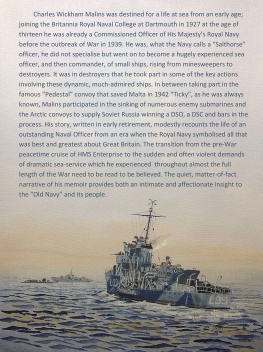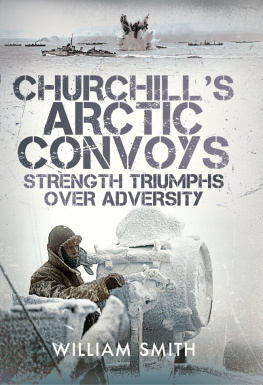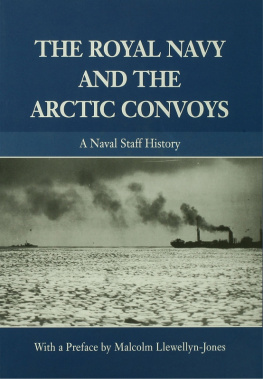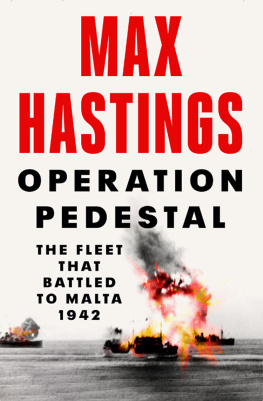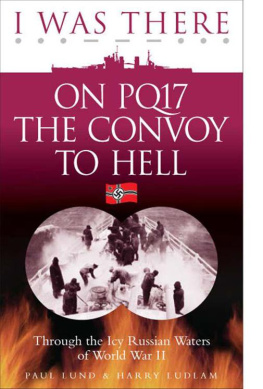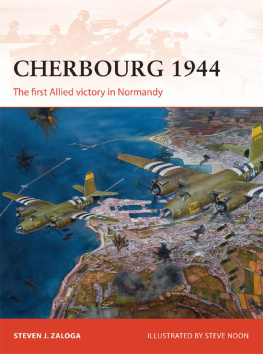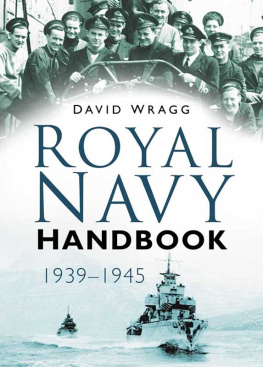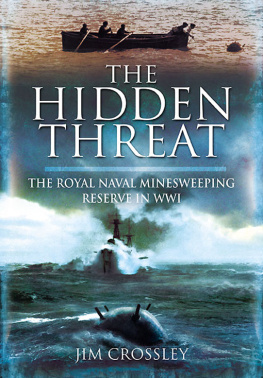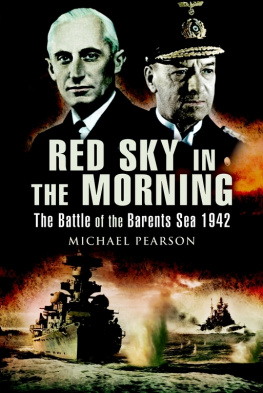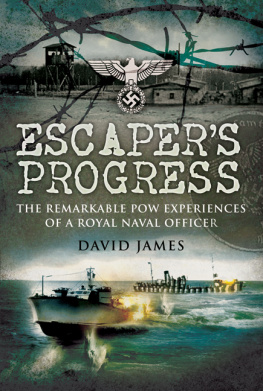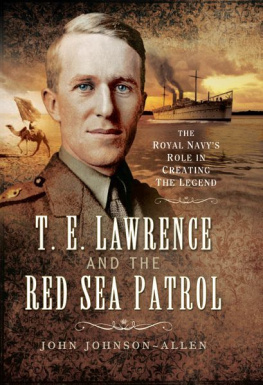The Seaboat
Cover illustration by Jim Rae
All ships of the Royal Navy keep a boat ready for immediate launching whenever they are at sea, the seaboat.
During The Second World War, when most of this narrative takes place, that boat was invariably the trusty 27 clinker-built, wooden, Montague whaler, a boat equally at home under oars or sail, but when used as the seaboat, always powered by oars, and a robust seaboats crew.
In the cover illustration HMS Easton, commanded by Ticky Malins, and HMS Wheatland, a sister ship, have attacked with depth-charges and forced to the surface the Italian submarine Asteria. The crew of the submarine are abandoning their sinking boat while Easton is lowering her seaboat to try to board her before she takes the final plunge, they want to try to capture codes, and other vital intelligence.
The seaboat is fully manned and half way to the water down the ships side, on deck a team of hefty sailors stand ready with the boatrope in hand poised for the seaboat to hit the water. Immediately it does, the crew will knock out the releases from the falls and the boatrope lads will then run down the deck hauling in the rope to give the seaboat momentum to sheer away from Easton and begin to pull on their oars, as soon as the boat can steer away from Eastons steel side the rope will be released.
This was an evolution practiced countless times and with coordinated teamwork could be accomplished in very few minutes from the giving of the order Away seaboat to the boat heading out and away from the ship.
Easton lies stopped, her engines still hot from the hunt, a wisp of steam is venting from her relief valves, they have only minutes to accomplish their task. In the event, submarine sinks too quickly to save any documents, but the crew are brought aboard as prisoners.
In the illustration the Mediterranean is showing a kindly face to the incident, more often than not this evolution had to be conducted in much rougher seas and equally often, in the dark of night. Seaboat drill, and seaboats crews were indeed tough and disciplined men.
AWAY SEABOAT!
By
CAPTAIN WICKHAM MALINS DSO DSC RN
HOW SWEET IT IS TO REMEMBER DANGERS WHEN THEY ARE PAST AND GONE
Euripides.
Reproduced by kind permission of the Malins Family
CONTENTS
ILLUSTRATIONS
Facing Page
Enterprise with all awnings spread at sea
Outside the Emperors Palace-Tokyo 1945
St James and other Battle Class Destroyers
PROLOGUE
As the old saying goes, Life should be lived looking forward and not looking back, and the other day, while gossiping in the kitchen one of my daughters said What did you do in the war. Dad? You never talk about it. This chance remark set me thinking What have I actually done with my life? Perhaps I ought to have a look back before Anno Domini takes its toll of the memory, if only for the interest of future generations who may one day wonder what their grandfather may have done with his, as I have sometimes wondered about mine and wished they had left some sort of record.
There is a proverb to the effect that A life of love is better than a love of life and I am indeed fortunate to have had both. But it will not be about the former that I now write. That, if she is ever moved to do so, must be left to my much beloved partner, who, having kept family diaries and letters more or less consistently throughout our married life will be able to make a much better job of it than I can.
EARLY DAYS
Life for me began on 15th May 1913 at 2 Inglis Road, Ealing, a small semi-detached house in which my father had lived before his marriage in 1910 with his brother Arthur and sister Millicent who, to the end of their lives remained unmarried. What little I know about my Malins forbears is contained in a family tree, compiled after a visit in 1954 to see the parish records in the village of Deddington near Oxford where they came from, with such portraits as exist in a drawer of my desk. My father was born in 1865, and knew very few of his relatives until after his fathers death in 1926 when a number of them got in touch with him. His father was born in 1834 in Deddington where his grandfather was said to have had a prosperous business making hunting boots for the gentry. He died in 1888 leaving a large family of eight, of which my grandfather was the eldest son. My grandfather went to Stratford-on-Avon Grammar School, and by 1860 was teaching at a school in Hastings (possibly Summerfields) where he met and married in 1863 Elizabeth Green, the elder daughter of a brewer in Lydd on Romney Marsh. In those days you could not prosper in the teaching profession unless you were in Holy Orders so, with financial help from the Greens, he went to Kings College, London and later entered the Church.
My father received the main part of his education from his father, then a Curate in Islington, where his younger brother suffered from rickets. This prompted my grandfather to move his family into the country where he obtained a living, as it was called, as Rector of two small parishes in Suffolk, Hoo and Leatheringham where I believe one of his last acts was to marry the parents of the Miss Blumfields of Shawland Farm, Catsfield, and whose mother he probably also taught. As a boy, my father used to walk six miles to Woodbridge for his music lessons and used to play, while his brother pumped, the Church organ for their father. After completing his education my father went as a young man to seek his fortune in London, where he then had a rich and prosperous Uncle married to his mothers sister, living in some style in Westbourne Terrace with, I believe, a coach and horses.
George Lipscombe made his pile trading generally in Singapore, and was by then retired. They had no children so more or less adopted my father whom they ordered to appear from time to time for a proper Sunday lunch. He was always reticent about it but I presume he must have lived a carefree life as a bachelor until his marriage at the age of forty five to my mother whom I believe he met on the golf course at Frinton in Essex, where my mothers father had a summer residence and I spent some of my childhood in World War I. It was while there one day we saw a Zeppelin attacked by fighters. By then my father had become Secretary to a number of companies trading mainly in India and overseas, and when the Chartered Institute of Secretaries was formed, he became one of its first members, eventually being elected a Fellow. About 1900, thinking that his father had been buried long enough in deep country, my father bought the advowson of Somersham, a village which has now become a suburb of Ipswich, to which he appointed his father rector. There were no pensions in those days for the clergy, and his last sermon was said to have been preached shortly before he died at the age of 91. My father always claimed he was an excellent preacher but nobody knows how many people formed his congregation. I dont remember ever meeting my grandfather who it was said owed his longevity to his housekeeper one Annie Noller, who fed him entirely on porridge. He was buried with my grandmother in Tunbridge Wells where she had died in 1911, while on holiday taking the waters with the Lipscombes. Their grave, alongside an opulent granite cross over that of the Lipscombes, is unmarked because my grandfather had a strong dislike for untidy and untended graveyards.
My mother was born in 1883? Her father worked all his life as a wharfinger in London at Bull and Brookes Wharf in Upper Thames Street, his forbears had also been connected with the Church. My mothers mother came from a large family of Quakers in Northumberland called Mounsey. My great grandmother was said to have been accidentally killed when her shawl caught in the machinery of her husbands mill in Sunderland while inspecting the works one Sunday after church.
Next page
